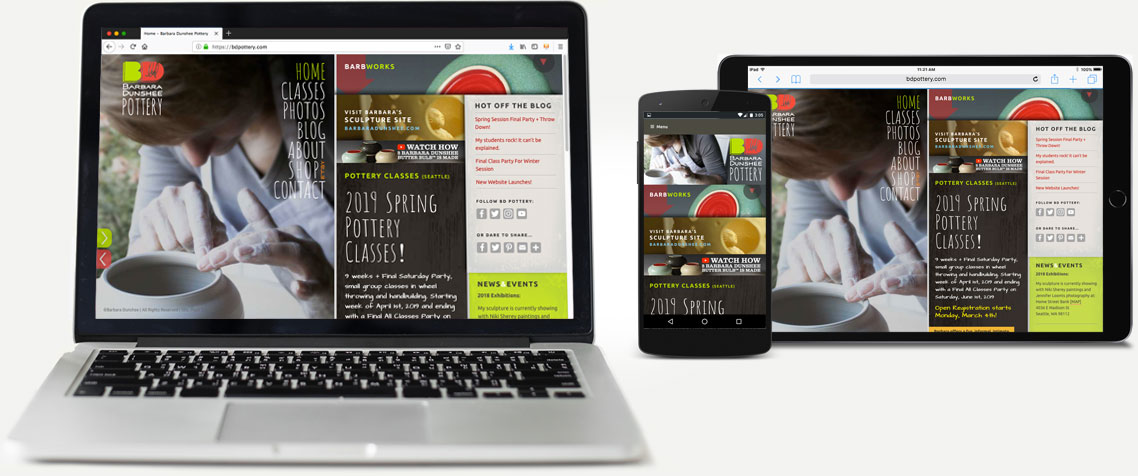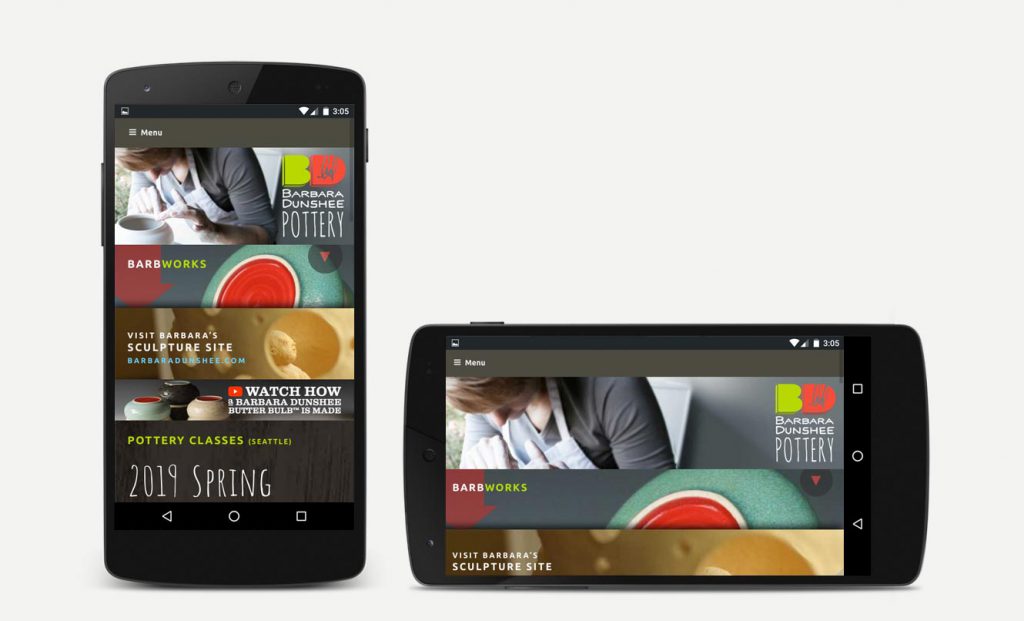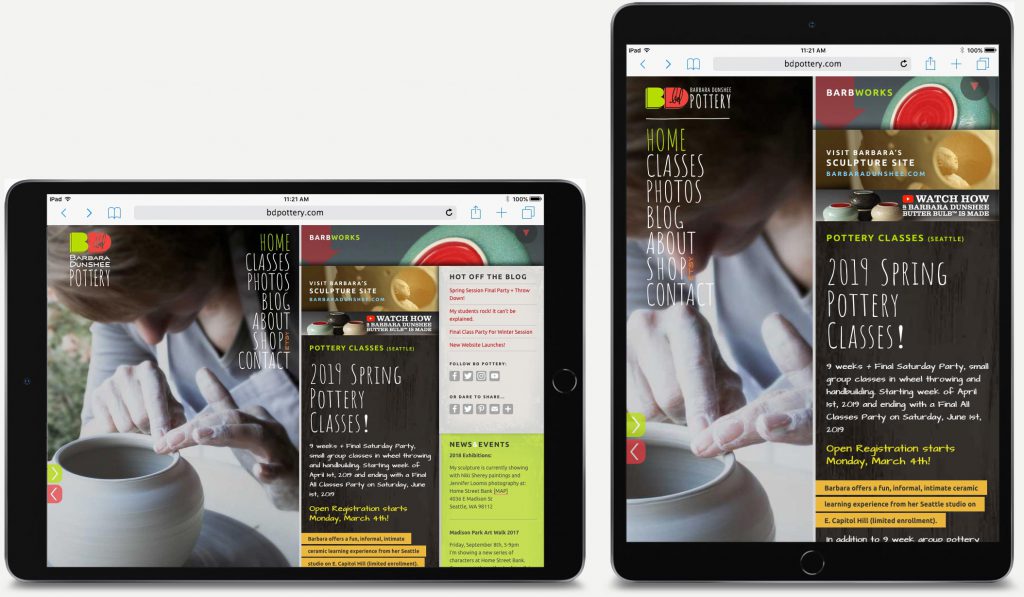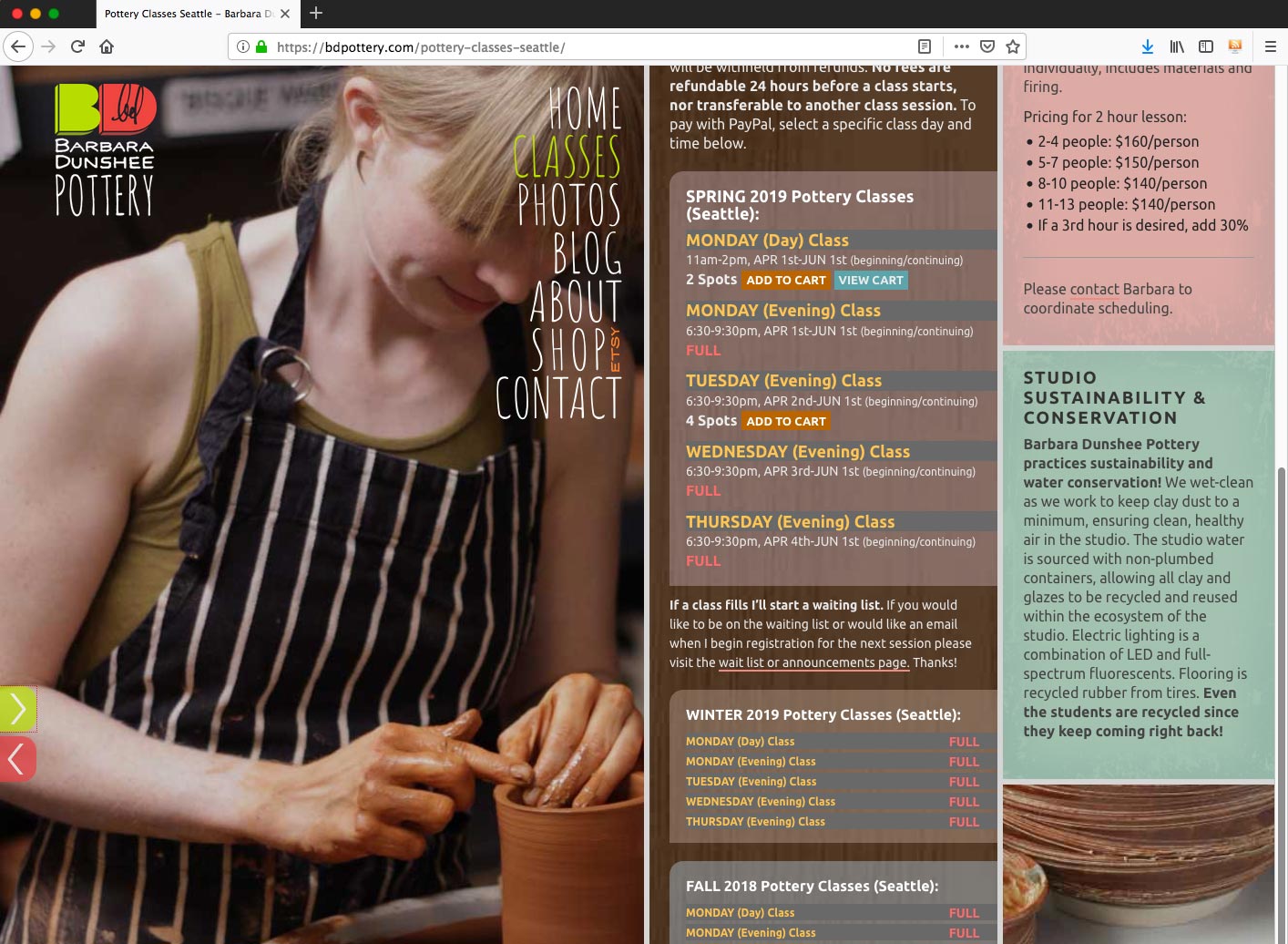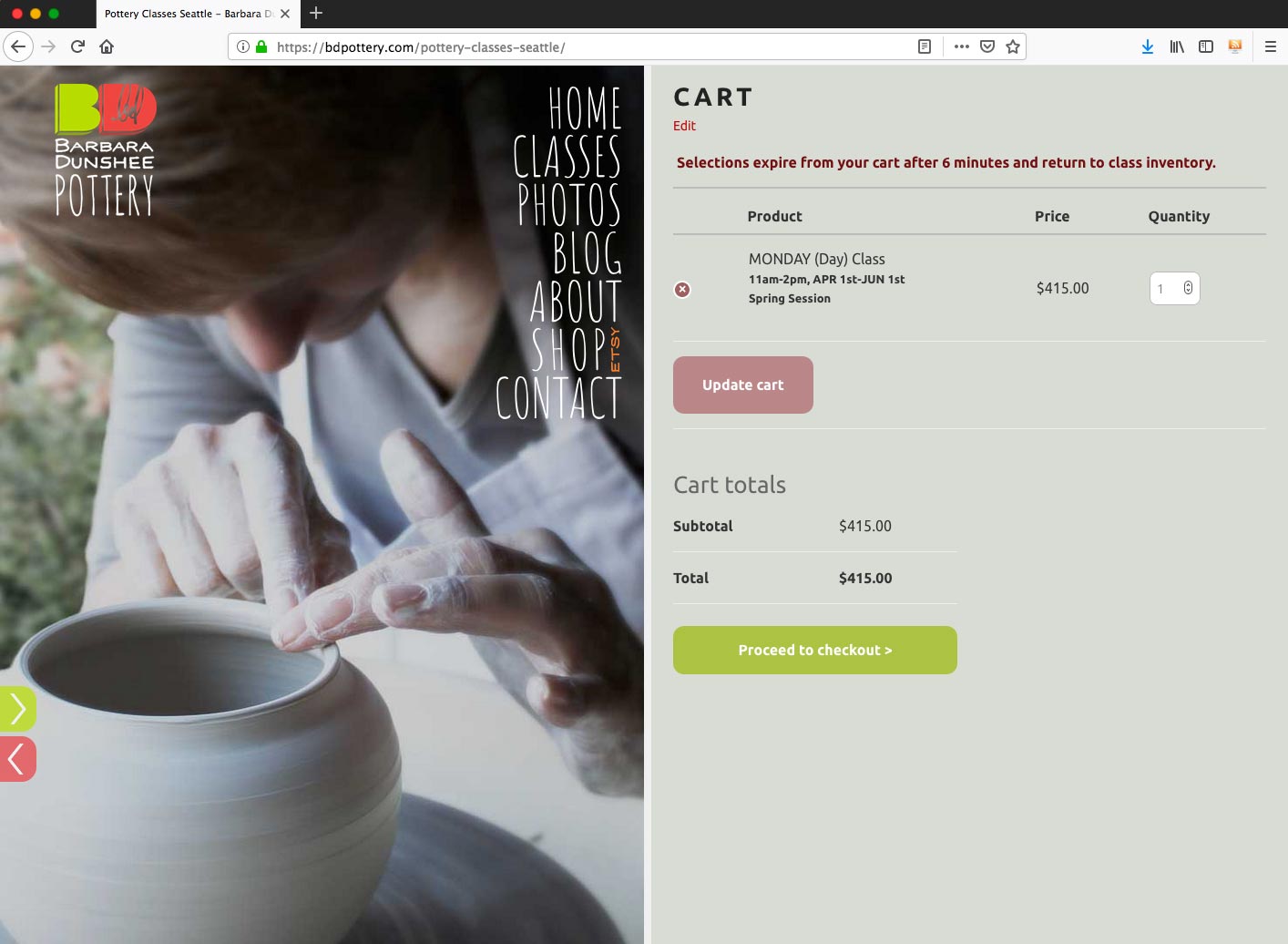A highly competitive, yet welcoming and playful web presence that propels business and fosters a loyal following.
From old school to new school.
As Barbara evolved as an artist and teacher, so did her approach to business. We shaped visual design, technology, and merchant tools around those needs to allow her business to thrive.
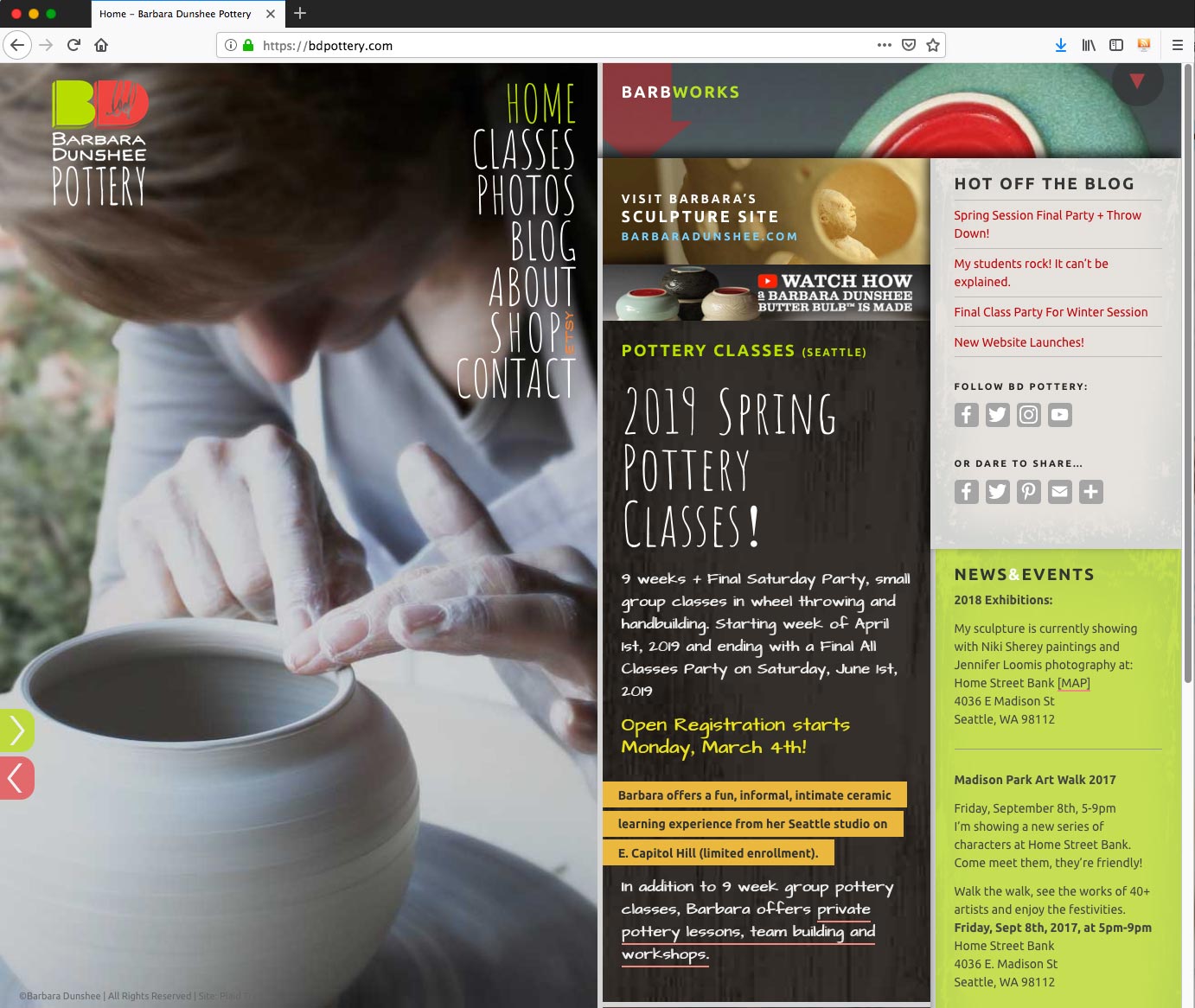
DESIGN
We asked the question, what sort of immediate impression should this site deliver? The answer came from working closely with Barbara to achieve a suitably balanced tone between playful and credible. Additionally, reflecting a genuine character and personality was vital, because a degree of authenticity would be read and related to by Barbara’s followers and students.
SEO
We deployed tried and true SEO methods to help the site rise to a first-page Google search ranking for her business category and location, and stay there.
Technology
The site aggregates social media imagery to make ongoing marketing a much simpler endeavor, and the site performs contact info capture, sorting, and migration to an email service that can meet Barbara’s varying communication needs.
User Experience
The site is responsive to a set of layered, interdependent needs: those that want to explore can get an immediate feel for Barbara’s products and teaching atmosphere, and for those who wish to become students, a seamless flow during the registration process.
Mobile Layouts:
Mobile Layouts: All PTC websites are built to ensure the design’s unique strengths deliver on all devices, including consistent usability.
The classes section
was designed to make registering a simple experience with a seamless flow, while also properly funelling all the information Barbara needed to best serve her students.
Which Design Principles?
Among several universal design principles we applied the Entry Point Principle1, which affirms that building a strong first impression drives further interest into a design or presentation.
1Lidwell, W., Holden, K., & Butler, J. (2003). Universal Principles of Design: 100 Ways to Enhance Usability, Influence Perception, Increase Appeal, Make Better Design Decisions, and Teach through Design. Rockport Publishers.






